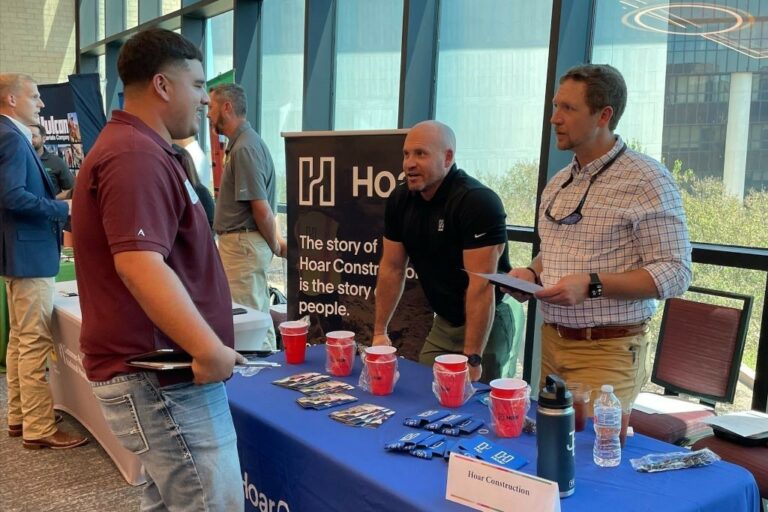
The challenges and uncertainties of the past few years in construction have made us all a little weary, ready for some good news and stability as we look ahead to 2023 and beyond. Fortunately, we’re in an industry that is still doing really well. There’s a lot of opportunity out there, people are still developing and building, and supply chain and labor issues seem to be lessening a bit.
We’re still fighting inflation on every front, looking for creative solutions to lock in pricing on materials, get trade partner commitments well in advance, and staying flexible as clients wait for financing to come through. But, because we’re used to dealing with these challenges now, and because new pursuits arrive every week, I’m optimistic, particularly in a few key market sectors, that with the right jobs, right partners, and right clients our industry will see more stability on the horizon.
Market Sector Outlook
Historically, we know that when interest rates rise, developer-driven deals can be more difficult to come by. This means more resources are available for institutional work, and we’re definitely seeing an uptick in healthcare and higher education projects. Multifamily remains strong, largely due to an ongoing housing shortage across the US. And in spite of shifts in need, we’re still seeing office work come through as well.
Healthcare
For the first time since 2012 we’re seeing more large hospital project starts. The healthcare industry went through uncertainty after the ACA was passed, but the dust has settled and we’re seeing both ground-up regional hospital projects and bed tower additions, especially in the Mid-Cap 100-150M range. Texas is a particularly hot market for healthcare, and we’ve seen a big push for more Free Standing Emergency Departments, Surgery Centers, and Outpatient Centers in an effort to de-centralize care, so it’s more accessible. We’re also seeing significant growth in our DC healthcare market.
Higher Education
Higher Education institutions are dealing with the same concerns they’ve always had when it comes to campus master plans and meeting evolving student needs, but their timelines for projects are now affected by the changes from the pandemic, online classes, how many students are returning to campus, and the overall impact on the university’s business model. To address these challenges, we’re seeing more importance placed on getting that sense of community back on campus that was lost. These projects range from dorm and classroom renovations to new student activity centers and gathering spaces. Across our footprint, Texas, Tennessee, DC, and Alabama are showing the most growth here.
Multifamily
We fully expect multifamily to be the first developer-driven market to bounce back. Affordability and the housing shortage make buying a single family home harder, so multifamily just makes sense. Especially in the Sunbelt, Tennessee, Florida, Alabama, and the Carolinas, multifamily starts are still ongoing, with more projects in the works. The speed at which this market sector returns is really going to come down to the attitudes of the lenders.
Office
Over the past several years, office has typically been part of a larger mixed-use package, but with inflation we’ve seen some of those projects stall. What’s getting off the ground in this sector are more build-to-suit offices, some in suburban areas, 2-3 stories with surface parking. These more boutique office projects are still part of the fallout from the pandemic, trying to compromise and create a space that’s convenient for everyone. Of note in this sector is that we’re also seeing some opportunities in converting existing office space into multifamily. National clients are looking into what it would take to make that conversion.
Labor and Diversity
With all this positive outlook, we know the future of the construction industry has real potential, especially with a diversified market approach. But without continued focus on the labor market, and diversifying our recruiting and retention efforts there as well, we won’t be able to be as successful.
At Hoar Construction, we’ve put increased emphasis on recruiting women, at HBCUs, from the military, and are looking into programs that aren’t traditionally designed for AEC to find people that are a good fit. It’s a great industry, and even if you are coming out of a Construction Management program, the first few weeks and months on the job you’re relearning everything. We’re looking at non-profits and middle and high schools to expose students to the opportunities construction has to offer earlier on.
We also know that one of the most important things in any company is the culture you build, how people feel coming to work day-to-day. We’re also putting an increased focus here, because it affects retention, the quality of work we do, and the relationships we’re able to build and maintain, both internally and externally. It’s a balance, managing essential change while staying true to your core values, but it’s one we’re working to strike for the long-term success of our company and the industry.

